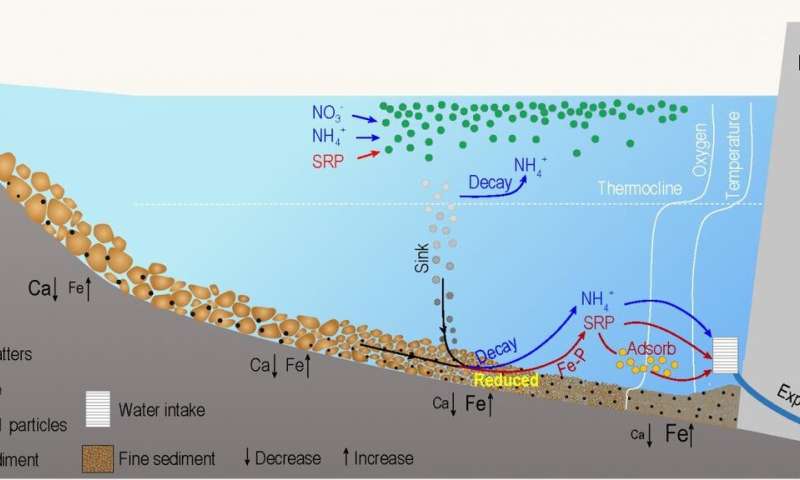Dams in the upper Mekong River modify nutrient bioavailability downstream

The number of hydropower dams has increased dramatically in the last 100 years for energy supply, climate change mitigation, and economic development. However, recent studies have overwhelmingly stressed the negative consequences of dam construction. Notably, it is commonly assumed that reservoirs retain nutrients, and this nutrient reduction significantly reduces primary productivity, fishery catches and food security downstream. Such perception largely hampers electricity supply and even sustainable socio-economic development in many developing regions such as the Congo and lower Mekong basins.
However, solid scientific support for the widespread belief that dams retain nutrients is usually lacking, because monitoring programs gathering data to establish how nutrient fluxes and phytoplankton production have changed after dam construction are rare. A new article by Qiuwen Chen and his research group at Nanjing Hydraulic Research Institute, China, together with Prof. Jef Huisman from the University of Amsterdam and Prof. Stephen C Maberly from UK Centre for Ecology & Hydrology now provides extensive monitoring data for the upper Mekong River. Their data reveal some surprising new insights.
Contrary to expectation, their study shows that a cascade of reservoirs along the upper Mekong River increased downstream bioavailability of nitrogen and phosphorus. The core mechanism is the synergic effect of increased hydraulic residence time and the development of hypoxic conditions due to stratification and organic matter accumulation. The lack of oxygen results in release of nutrients from the sediment and subsequent accumulation of ammonium and phosphorus in the deeper water layers of the reservoir, which enhances the concentration of dissolved nutrients released downstream from the base of the reservoirs.
Moreover, the longer residence time in the reservoirs strongly increased phytoplankton production, with a shift in species composition from diatoms upstream to green algae in the downstream reservoirs.
Upstream dams are regularly blamed for nutrient retention and consequently the collapse of primary productivity and fisheries, and even human rights of subsistence in the lower Mekong River. This work implies that the fishery decline in the lower Mekong River might be caused by other factors such as over-fishing, habitat modification, disruption of fish migration by dam construction or water quality deterioration from local sources, rather than a reduction in nutrient availability or primary productivity induced by the cascade dams upstream.
This novel perspective on the globally important issue emphasizes the need for dedicated monitoring of the environmental impacts of hydropower dams on nutrient cycling and primary production. The findings are of great significance not only for science, but also for sustainable social-economic development along the Mekong River and other transboundary rivers worldwide.
More information: Qiuwen Chen et al, Hydropower reservoirs on the upper Mekong River modify nutrient bioavailability downstream, National Science Review (2020). DOI: 10.1093/nsr/nwaa026
No comments:
Post a Comment